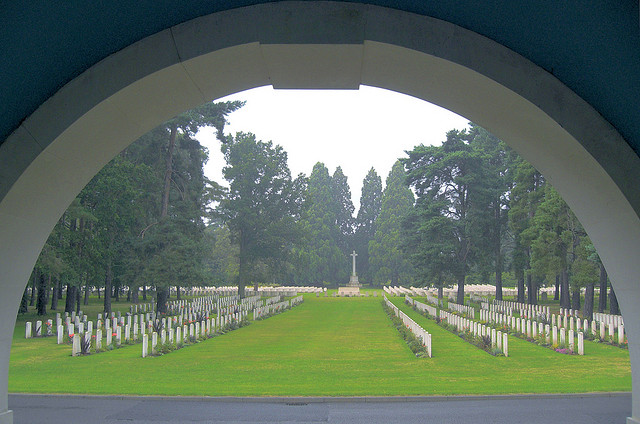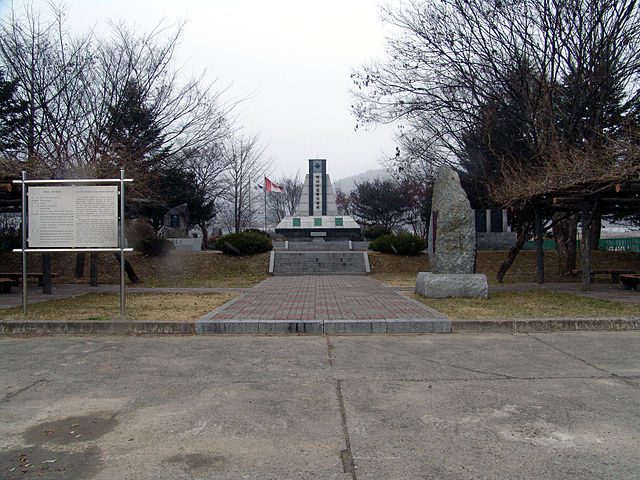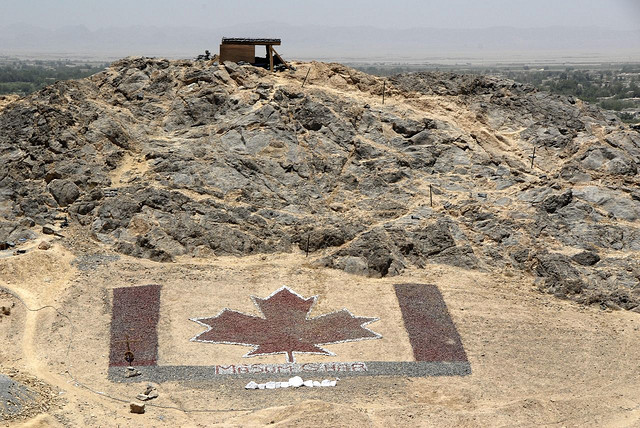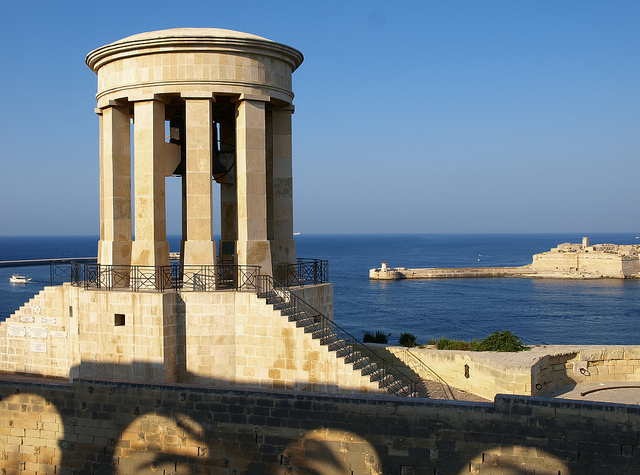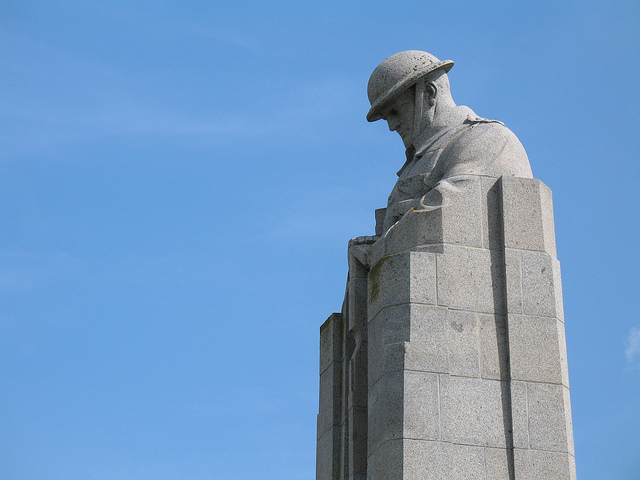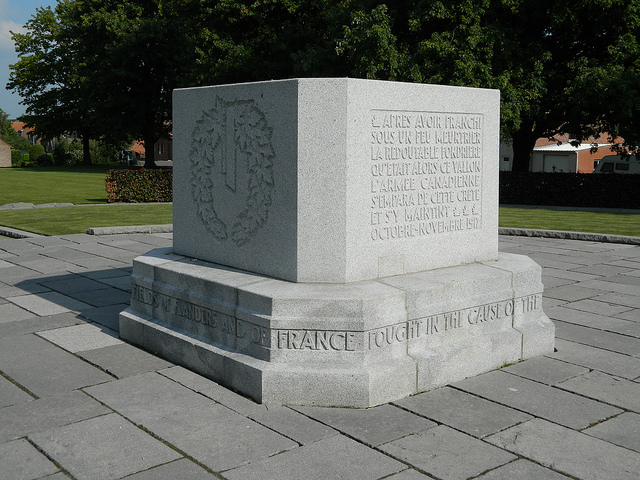The Great Wars of Europe killed around 40 million soldiers, and as many as 70 million civilians. Without attempting to understand all this carnage, all I can say is that then, as now, somebody had to something about a situation that had become unacceptable. Somebody, in that case, was the domain of brave young men, including too many Canadian boys cut down in their prime. We remember them with over six thousand Canadian war memorials abroad, honouring their names and sacrifice. Here are a few important ones you might find overseas, along with the stories behind them.
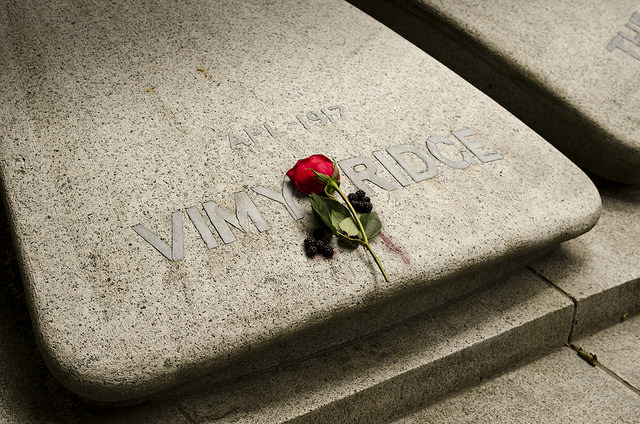
Vimy Ridge, France
Canadians lost around 65,000 soldiers in the human meat grinder that was World War 1 trench warfare. Their proudest moment at Vimy Ridge is one that many historians credit with establishing Canada’s identity as a young nation. Canadian battalions joined together for the first time to attack fortified German positions, sweeping forward with small victories, gaining as little as 100m at a push. The casualty count was high, but Canadian grit persevered, and the Germans were eventually overrun. In gratitude for their efforts, having contributed to a pivotal victory in the war, France gave the battlefield to Canada to forever establish a memorial, to both the soldiers who died at Vimy Ridge, and those who died elsewhere in the country without receiving a proper burial. Located 8km outside of the town of Arras, the 250 acre site is one of the few places to see actual WW1 trenches, although much of it is closed because of unexploded ammunition, and other safety reasons. Hundreds of thousands of people visit the memorial every year, be they proud Canadians, military buffs or veterans honouring the past.
The Brookwood Memorial, England
The UK’s largest is military and civilian is Brookwood in the county of Surrey. It contains a 37-acre military section with memorials and burial grounds for over 5000 soldiers, mostly from the Commonwealth. Over 2731 Canadian soldiers are buried here, the vast majority from the Second World War. Located on green and peaceful grounds, the impressive circular Brookwood Memorial was unveiled by the Queen in 1953, with the names of 3500 soldiers “to whom the fortunes of war denied a known and honoured grave”. The Canadian High Commission holds a Remembrance Day service here each year.
Gapyeong Monument, South Korea
When North Korea invaded its southern counterpart in 1950, Canadian troops became a significant part of an international force assembled by the United Nations. Some 27,000 troops were involved in the conflict, comprising members of air, sea and land divisions. While there is still conflict in the region, the armistice has held since 1953. Today, a South Korean and Canadian flag fly together at the Gapyeong Monument, which contains two additional memorials on either side, honouring the 2nd Battalion for the their efforts in the Battle of Hill 677, and naming all participating Canadian units respectively. According to a plaque on the main monument, Canadian forces suffered 516 deaths, and 1255 wounded during the war. It further mentions that “these valiant Canadians embodied their country’s commitments to safeguard the fundamental principles of the United Nations.” Much as they continue to do today as part of the international forces securing Afghanistan from the Taliban.
The war against an internationally condemned regime continues in Afghanistan, which, like all wars, dooms its soldiers, civilians and victims to violence and struggle. In Kandahar, where Canadian forces have been particularly involved in operations, a Memorial Inuksuk and plaque honours the 152 soldiers who have perished thus far in the country, along with other coalition soldiers who have fallen.
At the entrance to Malta’s capital city of Valetta, a memorial honours 2298 Commonwealth air crew who perished in the battle over the Mediterranean, with no known graves. A striking bronze-plated Golden Eagle sits atop a circular column, with panels on the base inscribed with the names of the fallen, including 285 Royal Canadian Air Force members. The inscription reads: over these and neighbouring lands and seas the airmen whose names are recorded here fell in raid or sortie and have no known grave. A further Latin inscription, translated into English states: An island resolute of purpose remembers resolute men.
The use of poison gas is so despised today that it helped form the basis of the USA’s decision to invade Iraq. Even in the bloodiest of wars, soldiers have honour. In World War I, Germany pioneered using mustard gas against the Allied forces, resulting in utter devastation and horror. In Belgium’s St Julien sits a park with a memorial to Canadian forces who were instrumental in defending the Western Front against some of the first poison gas attacks in the bloody Battle of Ypres. With the gas unleashed, Allied lines scattered in panic. Before the German infantry could attack, the First Canadian Division assembled into position, frantically holding the line in the wave of repeated attacks. They held the line for 48 hours before reinforcements arrived. Over 6000 casualties, and 2000 dead. Carved in rock, the memorial is a striking 11m high statue called The Brooding Soldier, his head forever lowered in memory of his comrades.
November, 1917. In 16 days of heavy fighting, the Canadian Corps were hit with 15 654 casualties and over 4 000 dead, all in a quest to occupy the high ground and capture the town of Passchendaele. Heavy rain and poor drainage turned this offence, part of the Third Battle of Ypres, into a muddy, bloody quagmire. 4000 young men with dreams, hopes and families. Men who could have worked the land, started innovative businesses, built homes for future generations. Standing waist high in cold mud, their friends falling around them, they continued to push on, eventually capturing the high ground. When the Italian army were badly beaten elsewhere, British Commanders diverted operations to support them, abandoning the momentum created during two phases of battle, and at a great cost of life. Passchendaele became an international symbol of senseless violence. The Memorial, located on the Crest Farm about 40km from Lille, is a large block of Canadian granite, surrounded by maple trees. Surrounding it are peaceful green fields. Enough blood has been shed here. As Churchill said not long after the horrors of World War I: “Those who fail to learn from history are doomed to repeat it.” And we did.
